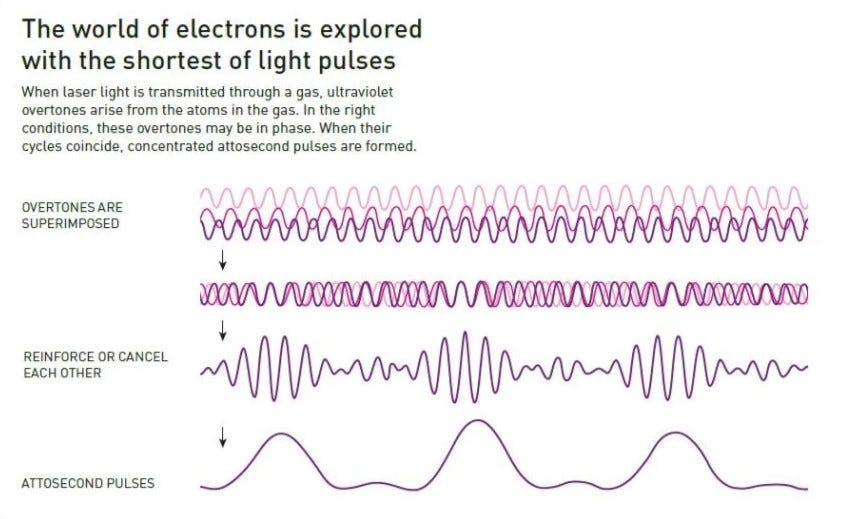In the previous blogpost, we read about “What are Attoseconds”.
In this post, we’ll learn how the scientists generated Attosecond pulses of light to observer sub-atomic particles.
The Need for Ultrafast Pulses
Before delving into the "how," it's essential to understand the "why." Electrons, the tiny particles that orbit the nucleus of an atom, move at astonishing speeds. To observe their motion and interactions, we require light pulses that can match their pace. Like we discussed in the last post, A few decades ago, the quickest light pulses we could produce lasted for femtoseconds (10^-15 seconds). However, to gain a deeper insight into electron dynamics, we had to venture into the realm of attoseconds (10^-18 seconds).
The Breakthrough
The key to producing attosecond pulses is the superposition of light waves. By combining waves of varying wavelengths and amplitudes, we can craft a pulse with the desired size and duration.
A groundbreaking technique involves shining infrared light onto neon gas. When this light interacts with an atom, it excites the electron. If the light's intensity is sufficiently high, the electron tunnels out of the atom. Yet, the oscillating electric field of the light might push the electron back towards the atom. When the electron returns, it releases its energy as an ultra-high-frequency light beam, emitting pulses of different frequencies, each linked to the original light's frequency (overtones).
By superimposing these frequencies, we can achieve attosecond pulses that last merely a few dozen attoseconds.
The Outcome
Thanks to these experiments, we've begun to observe electron movement and behavior. This has given birth to the emerging field of "Attosecond Physics." We anticipate numerous discoveries and a plethora of applications in this domain, such as:
Precise control over electron localization in molecules.
Development of ultra-fast electronics.
Molecular fingerprinting for blood plasma, which could potentially detect cancer at its earliest stages.
Students, as you delve into topics like photons, electrons, wavelengths, and the Fourier series (in the coming years), remember that these foundational studies can lead to groundbreaking discoveries. Stay informed and remain curious!
For more information on this topic, check this link out: https://www.nobelprize.org/prizes/physics/2023/prize-announcement/







